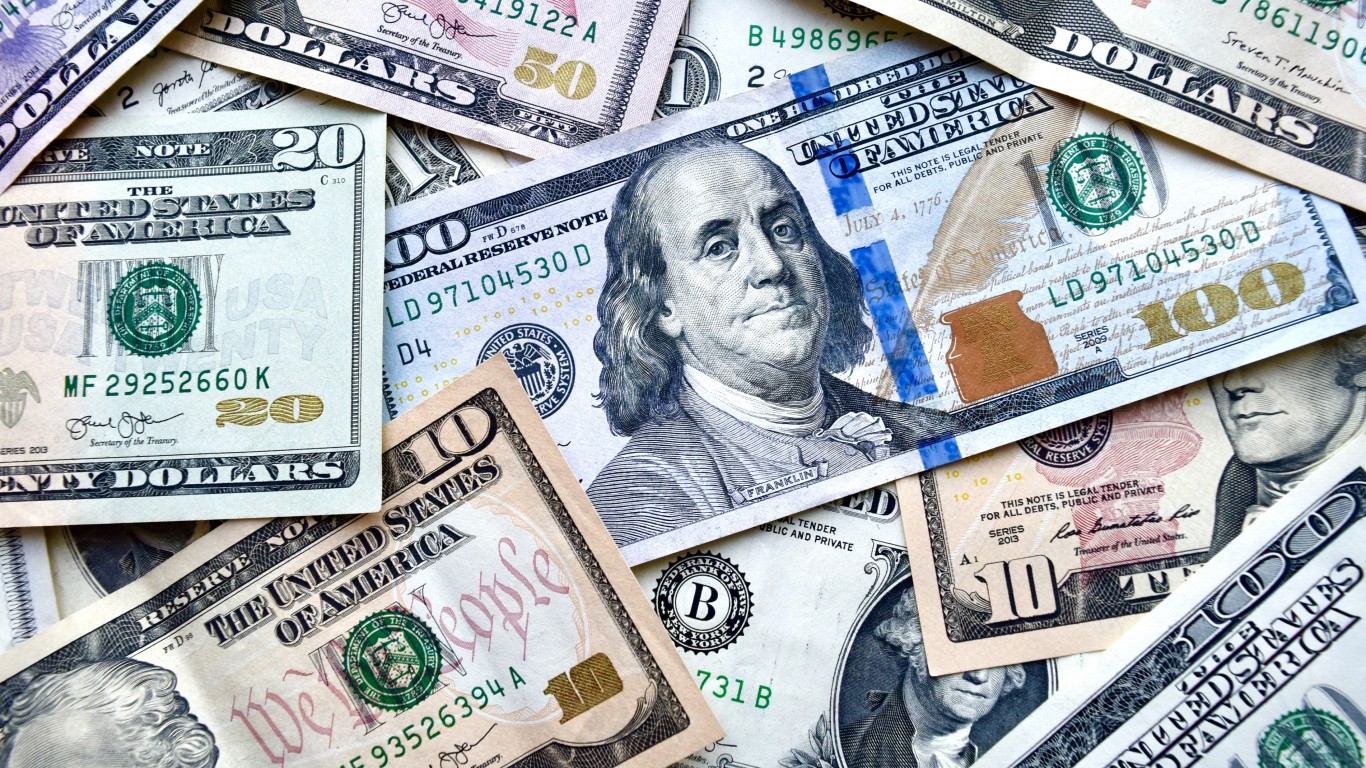Investors have become nervous again, and rightfully so. We have seen investors willing to step up to the plate on weakness and buy value or oversold stocks, but there is now a larger question to ask — is this finally becoming the fruition of that 10% stock market correction? It has been far too long since stocks have seen a 10% correction in the S&P 500 Index and Dow Jones Industrial Average.
24/7 Wall St. wanted to see what exactly a 10% correction would look like in the S&P 500 and in the DJIA. The good news is that these are close. The bad news: many investors may still have more fear once they see a 10% correction than they have in courage.
Unfortunately, the DJIA and the S&P 500 just broke under their key 200-day moving averages. The DJIA had already begun that break under the trend line, but the S&P 500 just did that on Monday.
24/7 Wall St. has provided information and levels on the DJIA, the S&P 500, the Nasdaq and the VIX. Prices were in the final minutes of trading on Monday rather than on exact closing prices. Also in oversold readings, here are the worst performing S&P 500 stocks of 2014 – and look at how poorly solar shares have performed!
The S&P 500 has a 52-week range of 1,692.13 to 2,019.26, and that high was seen as recently as September 19. A 1.5% decline in late on Monday to 1,879 is effectively drop of 6.9% from the peak. That 1,879 would also only have to see a drop to 1,817.33 to be a 10% correction from the high.
ALSO READ: Is Verizon the Only DJIA Stock to Own in a Sell-Off?
The DJIA has a 52-week range of 15,136.40 to 17,350.60, and the DJIA’s high was also on September 19. After a 210 point drop in the DJIA on Monday afternoon to 16,330, the DJIA is down 5.9% from its high as well. A 10% correction would be down at 15,615, another 715 points lower.
Nasdaq was down 1.4% to 4,216.43 late on Monday, against a 52-week range of 3,766.28 to 4,610.57, so it is down 8.5% from its 52-week high. A 10% correction would be down right at 4,150, a drop of another 66 points or so.
The CBOE Volatility — the VIX or Fear Index — has also risen handily since the volatility and selling have come into play. The VIX was up 3.19 at 24.43 (up 15%) on last look. We have a chart on that as well after the Dow and S&P charts below.
We have included a DJIA chart and S&P 500 chart from StockCharts.com below to show the moving average violations that have taken place.
ALSO READ: The 10 Safest High-Yield Dividends
ALERT: Take This Retirement Quiz Now (Sponsored)
Take the quiz below to get matched with a financial advisor today.
Each advisor has been vetted by SmartAsset and is held to a fiduciary standard to act in your best interests.
Here’s how it works:
1. Answer SmartAsset advisor match quiz
2. Review your pre-screened matches at your leisure. Check out the advisors’ profiles.
3. Speak with advisors at no cost to you. Have an introductory call on the phone or introduction in person and choose whom to work with in the future
Take the retirement quiz right here.
Thank you for reading! Have some feedback for us?
Contact the 24/7 Wall St. editorial team.





